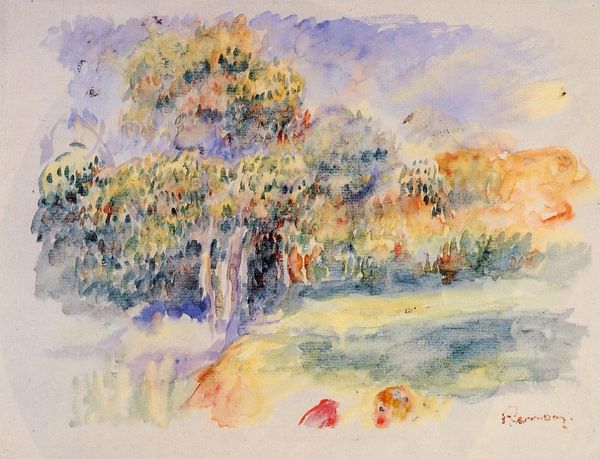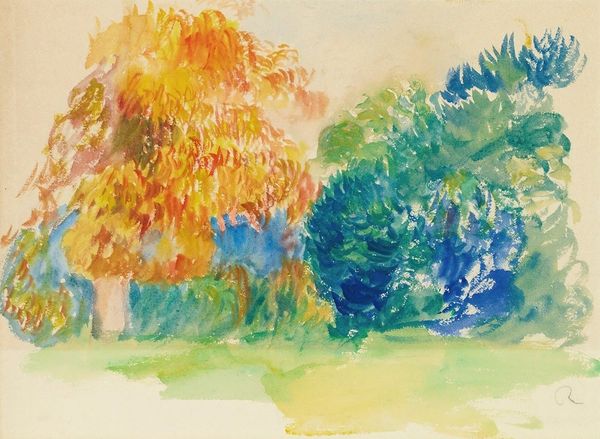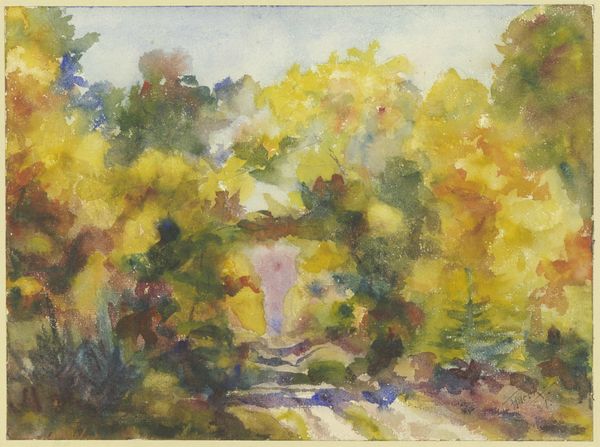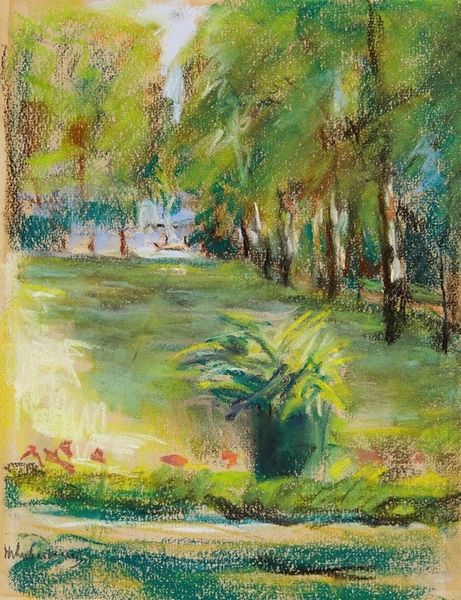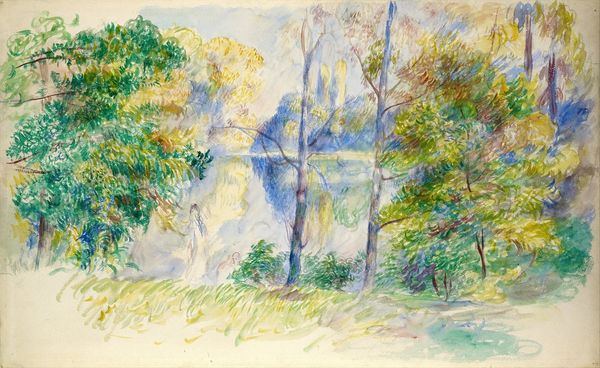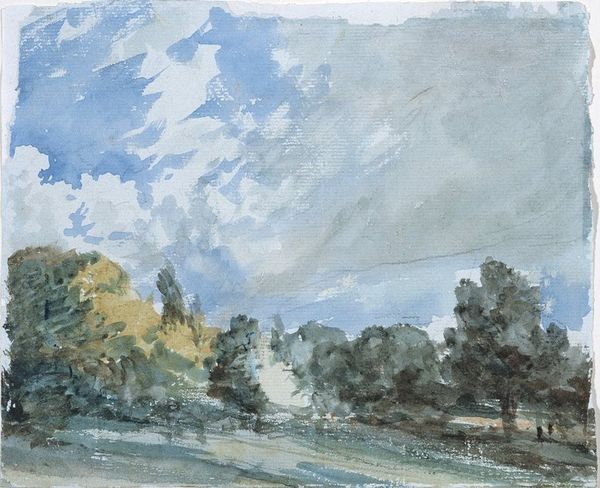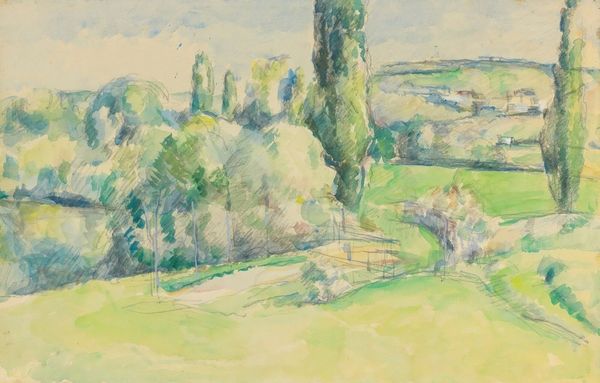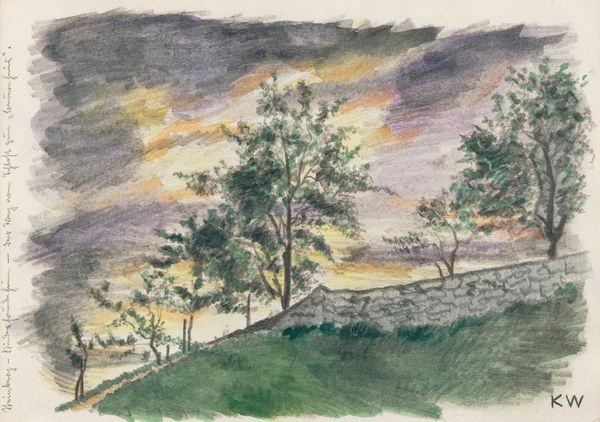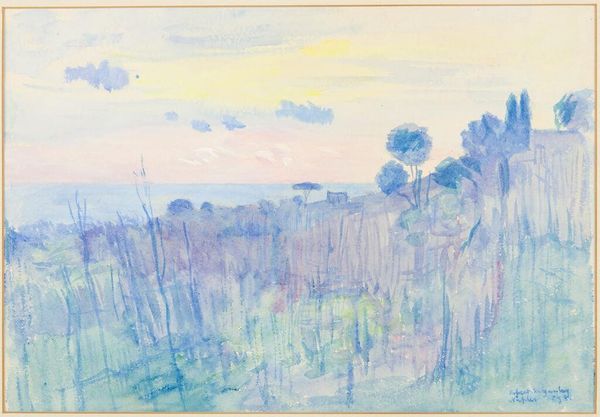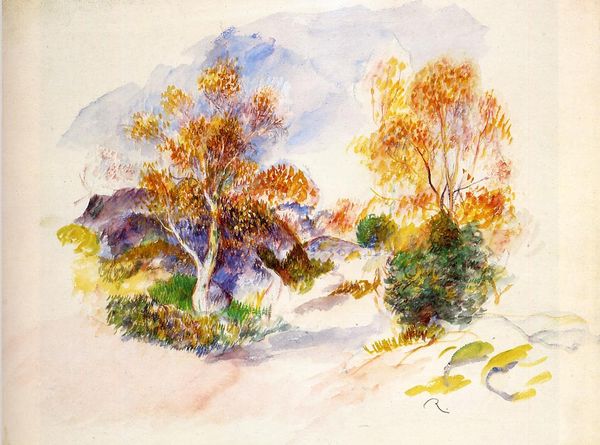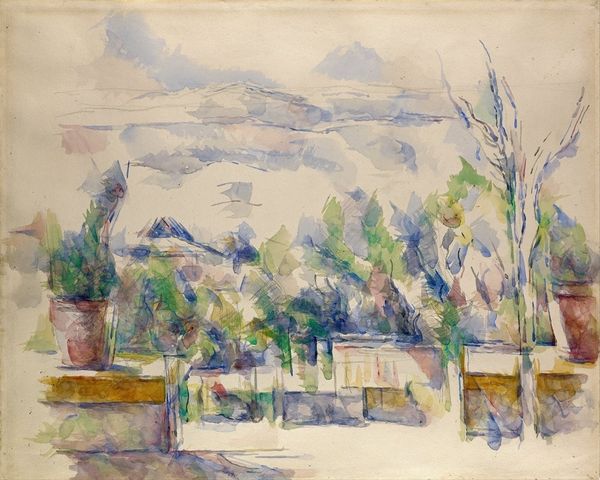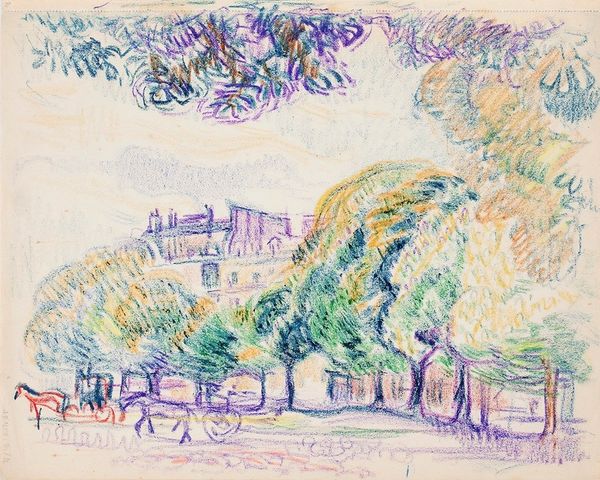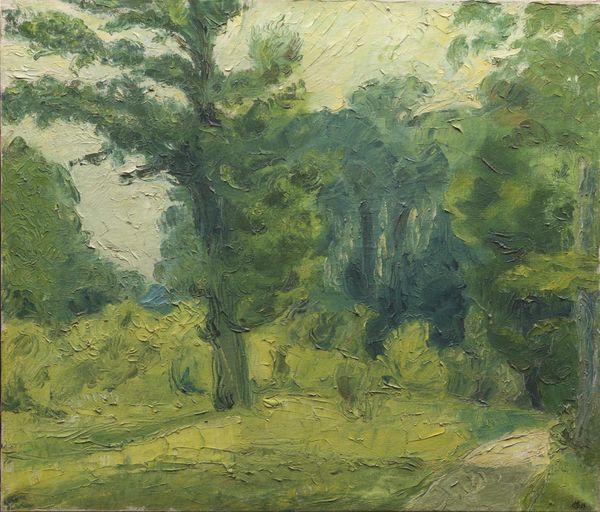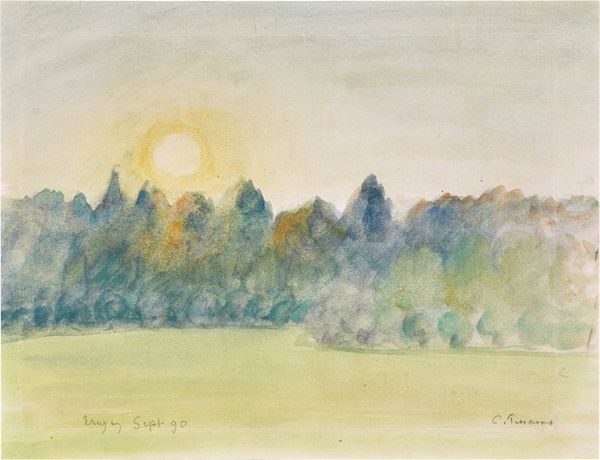
Copyright: Public Domain: Artvee
Editor: So, this is Max Liebermann’s “Blick in meinen Garten,” created around 1920 using pastel and likely watercolor on paper. The light and color give it a lovely, airy feel. How would you approach this piece? Curator: I’m particularly interested in Liebermann’s material choices. The texture of pastel, and the probable washes of watercolor, allow for a rapid build-up of layers and create a vibrant yet diffused image of his garden. It reflects the accelerated pace of modern life at the time, even in depicting a traditional subject matter like a garden. Notice how the blending of pigments makes it hard to differentiate between object and atmosphere? Editor: Yes, the blending really emphasizes the atmosphere! So, would you say the technique itself contributes to the meaning of the artwork? Curator: Absolutely. The almost casual application of materials contradicts the tradition of formally rendered landscapes. Consider too, the availability of manufactured pastels. The industrial production and increased accessibility of artistic materials influenced the shift away from academic art making and allows for experimentation, seen clearly here. Editor: That's interesting. I hadn’t thought about the link between mass production and artistic freedom. Curator: Exactly. Even the 'subject' itself – his garden - represents a retreat from the industrialized world but ironically relies on it to exist as a piece of art. Do you see that contradiction as well? Editor: I do now! The focus on materials opens a new window for analyzing this piece. Thanks for pointing that out. Curator: It also brings up the issue of accessibility to both art materials and subject matter, revealing a complex relationship between production, leisure, and the art market of Liebermann’s time. A lot to unpack!
Comments
No comments
Be the first to comment and join the conversation on the ultimate creative platform.
